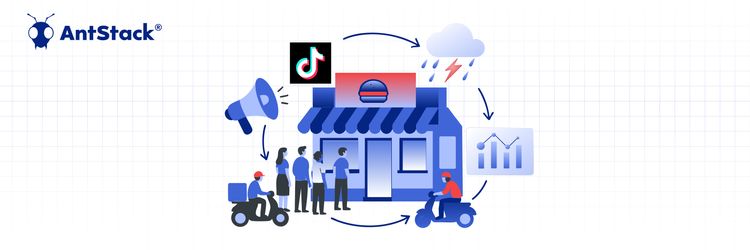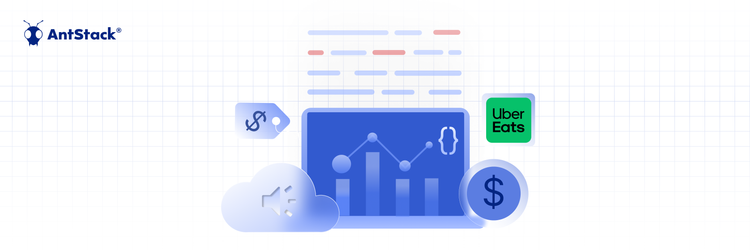Rethinking Cloud Spend: Modernization Over Short-Term Cuts
The serverless tech space is changing, offering new opportunities in the database architecture scene. Today, we're zooming in on three serverless databases - Fauna, PlanetScaleDB, and NeonDB - each with its unique strengths and features.
Fauna
Fauna is a globally distributed NoSQL database, known for its consistently low latency times, strong consistency profile, and relational capabilities within the context of a flexible document-oriented data model. Its pay-as-you-go model means you're only charged for actual usage - no costs during idle times. Plus, developers appreciate Fauna's robust Fauna Query Language and its wide support for various languages.
Key Factors:
Fauna combines the flexibility of document databases with the strong consistency and relational capabilities of traditional relational databases
Offers multi-region global distribution, ensuring low latency and high availability even during regional outages
Functions can restrict direct access to data, enabling secure and controlled interactions
Disclaimer: The article was written before Fauna announced it would cease operations as of May 30, 2025. The content is for informational purposes only. For more information, visit Fauna Service End of Life.
PlanetScaleDB
For those in the SQL realm, PlanetScaleDB offers a great solution. This database is designed to manage and scale MySQL databases, providing high-performance reads and writes. Like Fauna, PlanetScaleDB also follows a usage-based model, so you only pay for the resources you consume.
Key Factors
PlanetScaleDB supports horizontal scaling, enabling the handling of large workloads and improved maintenance tasks like backups
It allows branching of databases similar to code branches, enabling schema charges and development in isolated branches without downtime or data loss
Offers built-in high availability with automated replication and failover, and supports globally distributed applications with read-only regions
NeonDB
NeonDB is built for real-time, high-performance applications. This PostgreSQL-based relational database stands out with its high-speed read and write operations. NeonDB follows a consumption-based model, charging customers only for the data they use.
Key Factors
Neon separates compute from storage, allowing independent scaling of resources, instant provisioning, and autoscaling
It handles database administration, maintenance, and scaling, providing high availability and reducing the management burden on developers
TL;DR: Comparing Fauna, PlanetScaleDB, and NeonDB
| Database | DB Type | Free Tier Offering, Pricing Model | Region Support | Distinct Feature Offering |
|---|---|---|---|---|
| Fauna | NoSQL/DocumentDB | 100k read ops, 50k write ops, 500k compute ops, and 5GB storage Free Monthly. Pay as you go starting from 25$/Month | Global (with data centers across North America, Europe, Asia-Pacific, South America, and India) | Document-relational Model, Multi-Region Replication, and Backup, Official Driver support for C#, Go, Java, Javascript, Python, and Scala |
| PlanetScaleDB | SQL (MySQL-based) | Free tier: 10GB storage, 20 connections. Developer plan: $49/month, 10 databases, 20GB storage, 100 connections. Business plan: $999/month, 25 databases, 100GB storage, 500 connections | Global: East Asia, Europe, North America, South Asia, Australia | Branching, Non-blocking schema changes, Deploy schemas from CI/CD, Automated failover |
| NeonDB | SQL (PostgreSQL-based) | Free tier: Up to 1 million requests per day, 10GB storage. Pricing scales with usage, with additional costs for data transfer, backups, and replication | North Virginia, Oregon, Frankfurt, Ireland, Sydney, Mumbai, São Paulo, London | Database Branching, Fully Serverless, Multi-Cloud and Multi-Region, Fine-Grained Security with PostgreSQL RLS |
The Experiment: Measuring Speed Of the Three Serverless Databases
So we decided to see how fast our three chosen databases could go. We set up a test, and crunched the numbers with the following parameters:
- Compute: We ran the tests on AWS Lambda with its default configurations in the same region as the databases were set up (us-east-1/US North Virginia) and used API Gateway to invoke it.
- Schema: We created the same database schema in each service and populated them with identical volumes of data.
- Querying: We used the native drivers provided by each service to query the databases. We ran the tests for various row limits, specifically 10, 50, 100, 250, 500, 1000, 2500, and 5000 rows.
- Repetition and Averaging: Each data size query was performed multiple times for each database. This was done to account for any inconsistencies and to establish an average response time.
Results
Note that these numbers are excluding Lambda Cold Starts but could include Cold Starts from the Database Provider itself.
| Database | Rows: 10 | Rows: 50 | Rows: 100 | Rows: 250 | Rows: 500 | Rows: 1000 | Rows: 2500 | Rows: 5000 |
|---|---|---|---|---|---|---|---|---|
| Fauna | 49.9 ms | 53.1 ms | 45.9 ms | 86.2 ms | 147.2 ms | 280.1 ms | 705.9 ms | 1293.5 ms |
| Neon | 56.4 ms | 18.7 ms | 20.8 ms | 44.5 ms | 56.4 ms | 107.4 ms | 160.7 ms | 304.6 ms |
| PlanetScale | 149 ms | 55.3 ms | 14.5 ms | 47.1 ms | 74.5 ms | 142.8 ms | 344.1 ms | 836.9 ms |
Top 3 Considerations When Choosing a Serverless Database
1. Performance Requirements
Serverless databases vary in latency guarantees and cold‑start behavior, which is critical for real‑time apps. If you need sub‑20 ms global reads (e.g., live‑chat or real‑time analytics), note Fauna’s built‑in multi‑region consistency, PlanetScale’s connection‑pool optimizations to keep sessions warm, and NeonDB’s zero‑copy fork architecture for near‑instant scale‑outs.
2. Data Model Needs
Your domain dictates the best fit. For heavy ACID transactions and complex joins, lean on MySQL‑ or PostgreSQL‑compatible engines like PlanetScaleDB and NeonDB. If you’re storing flexible JSON documents, nested queries, or graph‑style relationships, like user profiles, event logs, or social graphs, Fauna’s FQL and document API can dramatically simplify schema design.
3. Ecosystem Compatibility
A database is the heart of a broader stack. PlanetScaleDB’s Git‑driven schema migrations pair flawlessly with Prisma and GitHub Actions for CI‑first workflows. Fauna’s GraphQL‑native API snaps into Apollo or Hasura‑powered front ends with zero middleware. NeonDB’s Postgres wire‑protocol support unlocks native Kafka sinks, Timescale‑style extensions, and any tool that speaks PostgreSQL.
Conclusion
By weighing performance SLAs, data‑model fit, and ecosystem alignment against your application’s unique demands, you’ll position your team to move faster, innovate more freely, and only pay for what you actually use. Choose the platform that best complements your architecture, and let serverless databases drive your next breakthrough.









